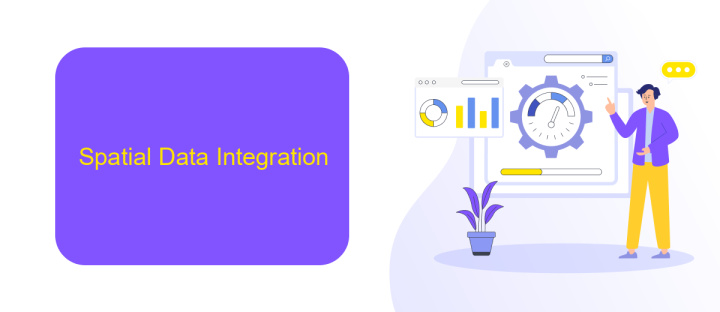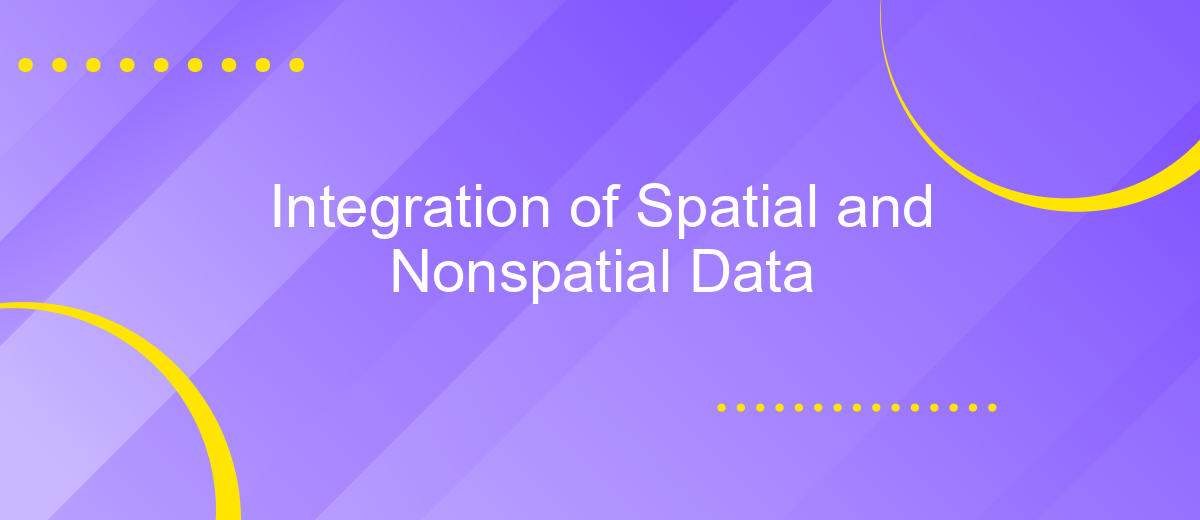Integration of Spatial and Nonspatial Data
The integration of spatial and nonspatial data is revolutionizing various fields by enabling more comprehensive analysis and decision-making. By combining geographic information with traditional datasets, organizations can uncover deeper insights, optimize operations, and enhance predictive capabilities. This article explores the methodologies, benefits, and challenges of merging these data types, providing a holistic view of how spatial and nonspatial data integration is shaping the future.
Introduction
The integration of spatial and nonspatial data is becoming increasingly important in various fields, including urban planning, environmental monitoring, and business analytics. By combining these two types of data, organizations can gain a more comprehensive understanding of their operations and the environments in which they operate. This integration enables better decision-making, improved resource management, and enhanced predictive capabilities.
- Enhanced decision-making through comprehensive data analysis
- Improved resource management by understanding spatial distributions
- Increased predictive capabilities with combined data insights
One of the tools that facilitate this integration is ApiX-Drive. ApiX-Drive allows users to seamlessly connect various data sources, enabling the automatic synchronization of spatial and nonspatial data. This automation not only saves time but also ensures data accuracy and consistency. As a result, organizations can focus more on analyzing the data rather than managing it, leading to more informed and effective decision-making processes.
Spatial Data Integration

Spatial data integration involves combining spatial data from various sources to create a unified view. This process is crucial for applications such as geographic information systems (GIS), urban planning, and environmental monitoring. By integrating spatial data, organizations can enhance decision-making, improve data accuracy, and uncover new insights. The integration process typically involves data cleaning, transformation, and alignment to ensure compatibility and consistency across different datasets.
One effective way to streamline spatial data integration is by using services like ApiX-Drive. ApiX-Drive offers automated workflows that facilitate the seamless integration of spatial and nonspatial data. By leveraging ApiX-Drive's capabilities, users can set up integrations without extensive coding knowledge, saving time and reducing errors. This service supports various data formats and sources, ensuring that spatial data can be easily combined with other types of data to provide a comprehensive view for analysis and decision-making.
Nonspatial Data Integration

Nonspatial data integration involves combining data that does not have a geographic or spatial component. This type of data can include text, numerical values, and other forms of information that are critical for comprehensive analysis and decision-making. Effective integration of nonspatial data ensures that organizations can leverage all available information to gain deeper insights and make informed decisions.
- Identify the sources of nonspatial data, such as databases, APIs, and flat files.
- Extract the data using appropriate tools and techniques.
- Transform the data to ensure compatibility and consistency.
- Load the data into a centralized repository or data warehouse.
- Utilize integration platforms like ApiX-Drive to automate and streamline the process.
ApiX-Drive is a powerful integration platform that simplifies the process of connecting different data sources and automating workflows. By using ApiX-Drive, organizations can easily integrate nonspatial data from various sources, ensuring that all relevant information is available for analysis. This leads to more efficient operations and better decision-making capabilities.
Challenges and Solutions

Integrating spatial and nonspatial data poses several challenges that require innovative solutions. One major challenge is the heterogeneity of data formats, which complicates the merging process and often leads to data inconsistencies. Additionally, ensuring data accuracy and reliability is critical, as spatial data can be prone to errors due to various factors such as outdated maps or inaccurate GPS readings.
Another significant challenge is the scalability of the integration process. As the volume of data grows, traditional methods may become inefficient, requiring more advanced tools and techniques to handle large datasets effectively. Furthermore, data privacy and security concerns must be addressed, especially when integrating sensitive information from multiple sources.
- Utilize data transformation tools to standardize formats.
- Implement robust data validation techniques to ensure accuracy.
- Leverage scalable cloud-based solutions for handling large datasets.
- Adopt stringent security protocols to protect sensitive data.
- Use integration platforms like ApiX-Drive for seamless data merging.
By addressing these challenges with appropriate solutions, organizations can effectively integrate spatial and nonspatial data, leading to more informed decision-making and enhanced operational efficiency. Tools like ApiX-Drive can play a crucial role in simplifying the integration process, offering automated workflows and real-time data synchronization.
Conclusion
The integration of spatial and nonspatial data presents significant opportunities for enhanced decision-making and comprehensive analysis. By combining geospatial information with traditional datasets, organizations can uncover patterns and insights that would otherwise remain hidden. This approach not only improves the accuracy of predictive models but also enables more effective resource management and strategic planning.
Implementing such integrations can be streamlined with tools like ApiX-Drive, which facilitate the seamless connection of various data sources. ApiX-Drive's user-friendly interface and robust functionality ensure that spatial and nonspatial data can be efficiently merged without extensive technical expertise. As a result, businesses can leverage these insights to drive innovation and achieve a competitive edge in their respective industries.
FAQ
What is the difference between spatial and nonspatial data?
Why is it important to integrate spatial and nonspatial data?
What are some common challenges in integrating spatial and nonspatial data?
How can automation tools help in integrating spatial and nonspatial data?
What industries benefit the most from integrating spatial and nonspatial data?
Routine tasks take a lot of time from employees? Do they burn out, do not have enough working day for the main duties and important things? Do you understand that the only way out of this situation in modern realities is automation? Try Apix-Drive for free and make sure that the online connector in 5 minutes of setting up integration will remove a significant part of the routine from your life and free up time for you and your employees.

